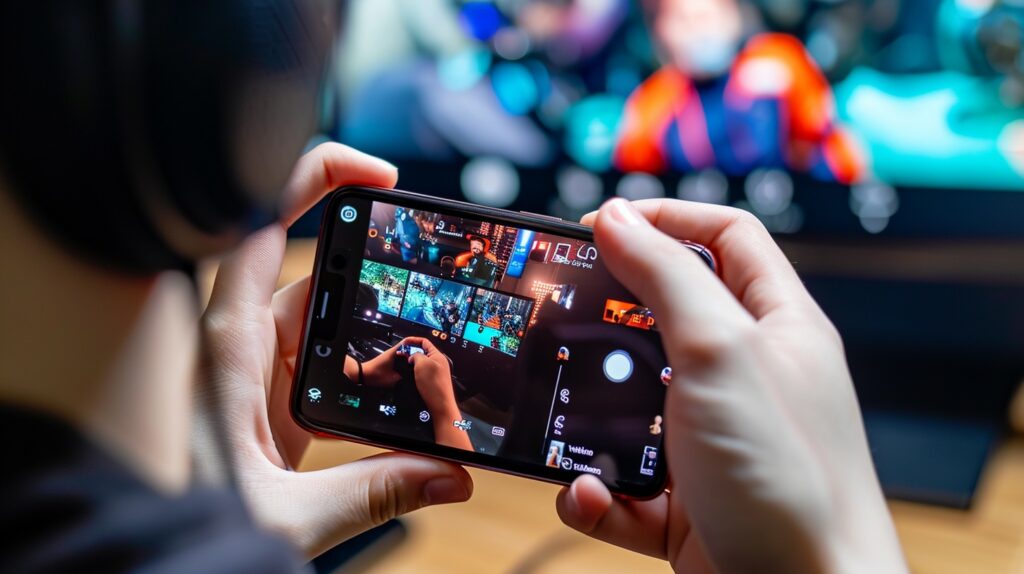
The Evolution of Gaming: From Arcade Classics to Blockchain Adventures
Gaming has come a really long way from the yesteryears of pixelated screens and joystick adventures to today’s immersive experiences that rival reality itself. Every technological advancement, cultural shift, and groundbreaking innovation brought something new and exciting to the table. In the arcade years, gamers had to pay for every game; but now there are games like Hamster Kombat that pay YOU in every game. And with the right Hamster Kombat Price, every in-game asset you collect can be worth a considerable amount of dollars. Let’s take a nostalgic walk down the gaming memory lane and see how gaming has evolved from its quarter-powered beginnings.
The Golden Age of Arcades
Picture the 1970s. Bell-bottoms are in style, disco is king, and a little game called “Pong” is about to change the world. Created by Atari’s Nolan Bushnell and Ted Dabney in 1972, “Pong” was the spark that ignited the arcade craze. Soon, arcades popped up everywhere, drawing crowds with their flashing lights and addictive gameplay.
The late 1970s and early 1980s were the golden age of arcade games. “Space Invaders” (1978) had us defending the Earth from alien invaders, “Pac-Man” (1980) had us munching dots and evading ghosts, and “Donkey Kong” (1981) introduced us to a certain Italian plumber named Mario. High scores became a badge of honor, and arcades turned into social hubs where kids and adults alike battled for supremacy.
Consoles Take Over the Living Room
As the 1980s rolled on, gaming began to invade our homes. Nintendo’s NES (Nintendo Entertainment System) launched in 1985, bringing the magic of arcade games into living rooms around the world. “Super Mario Bros.” became an instant classic, with players guiding Mario on his quest to save Princess Peach from the evil Bowser. The NES was more than just a console; it was a revolution.
The 1990s saw a fierce rivalry between the Sega Genesis and the Super Nintendo Entertainment System (SNES). Sonic the Hedgehog sped onto the scene, while “The Legend of Zelda: A Link to the Past” captivated us with its epic adventure. Then came Sony’s PlayStation, which took gaming to new heights with CD-based games and 3D graphics. Titles like “Final Fantasy VII” and “Metal Gear Solid” showcased the potential for storytelling in games, making them more immersive than ever before.
The Internet Changes Everything
Enter the late 1990s and early 2000s, when the internet started to weave its way into gaming. Suddenly, we could play with people from all over the globe without leaving our homes. “EverQuest” and “World of Warcraft” introduced us to massive online worlds where we could quest, battle, and trade with millions of other players. MMORPGs (massively multiplayer online role-playing games) became a new way to escape reality.
Broadband internet further revolutionized gaming. Xbox Live and PlayStation Network made it possible to compete with friends and strangers alike in real time. Games like “Halo 2” and “Call of Duty” became arenas for intense online battles, turning gaming into a social experience that transcended borders.
Gaming Goes Mobile
As smartphones became ubiquitous in the 2010s, gaming went mobile. Remember the “Angry Birds” craze? Those furious fowls catapulted mobile gaming into the spotlight. Games like “Candy Crush Saga” had us matching sweets during our commutes, and “Pokémon GO” took us outside, blending the virtual and real worlds like never before.
The rise of mobile gaming also spurred the development of game engines like Unity and Unreal Engine, making it easier for indie developers to create and distribute games. This democratization of game development led to a boom in unique, innovative games that pushed the boundaries of creativity.
The Blockchain Boom
And now, we arrive at the latest frontier: blockchain gaming. Blockchain technology, with its decentralized networks and cryptocurrencies, is opening up new possibilities in the gaming world. These aren’t just games; they’re entire economies where players can earn real-world value.
Take “Axie Infinity,” for example. In this game, players collect, breed, and battle digital creatures called Axies. Winning battles and trading Axies can earn players cryptocurrency, which can be converted into real money. It’s a whole new way to play, where your in-game efforts can actually pay off in the real world.
NFTs (non-fungible tokens) are also making waves in gaming. Games like “The Sandbox” and “Decentraland” let players buy, sell, and trade virtual land and items as NFTs. These digital assets are unique and can be owned, creating a new layer of value and ownership in the gaming world. Meanwhile, clicker games like Notcoin and Hamster Kombat lets players collect in-game coins and groom assets by tapping their screens continuously.
What’s Next?
So, what’s on the horizon for gaming? Virtual reality (VR) and augmented reality (AR) are poised to take us even deeper into immersive experiences. Imagine donning a VR headset and stepping into a fantastical world, or using AR to battle dragons in your living room. Games like “Half-Life: Alyx” and “Pokémon GO” are just the beginning. Blockchain technology will likely continue to evolve, integrating with VR and AR to create even more immersive and rewarding gaming experiences. The lines between the virtual and real worlds are blurring, and the possibilities are endless.
From the nostalgic glow of arcades where quarters were king, to the explosive world of blockchain-based games where your in-game achievements can earn you real-world rewards, the journey has been a fascinating tale of technological innovation and cultural transformation. Each era has brought its own innovations and challenges, shaping the way we play and connect. As we look to the future, one thing is clear: gaming will continue to surprise, delight, and bring people together in ways we can only imagine.







